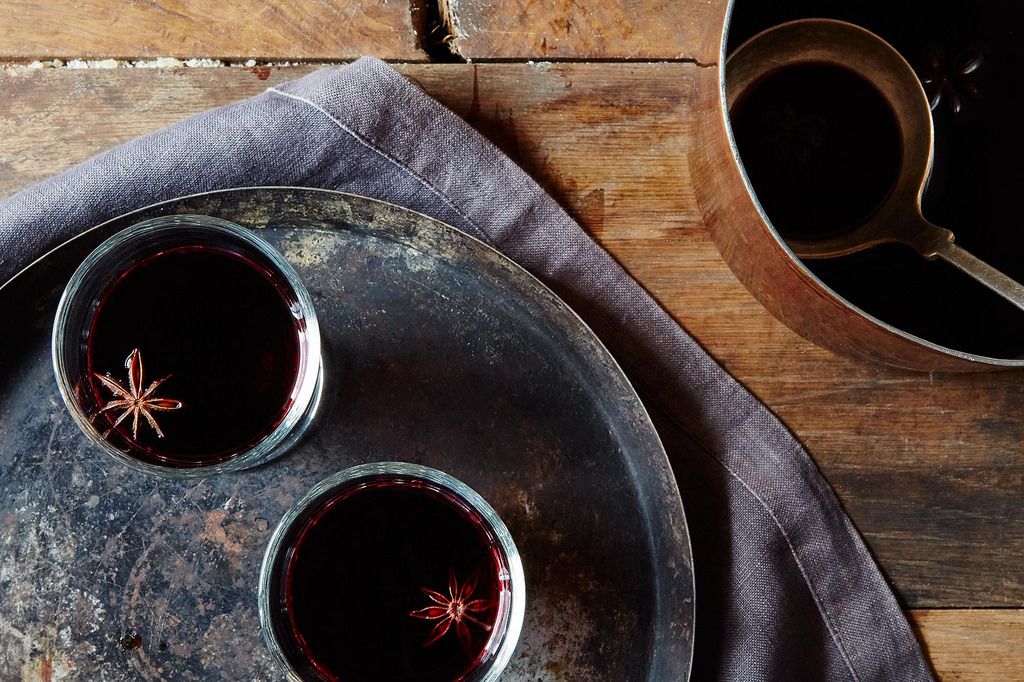When he's not busy running the cocktail program at New York City's Marta, Erik Lombardo is giving us the rundown on all things spirits -- and showing us the best ways to drink them.
Today: How do you make mulled wine even better? Just add booze.

Sommeliers in the shmanciest restaurants use a saying to get themselves out of those situations when someone asks for a pairing with a particularly tricky food: If it grows together, it goes together. Basically, if a wine grows in the area that the food originated from, it will go well with the food -- people from that region make wine to complement the local cuisine. This axiom can be applied to the more spirited world as well. If you want to know how to treat rum, ask a Cuban; for bourbon, look to Kentucky. And if you want to know how to chase the last vestiges of bone-deep cold from your body after shoveling what feels like acres of snow, or to soothe the ache in your legs from that last ski run, ask a Swede.
The word glögg first appears in print in 1870, but Swedish glödgad vin (roughly translated to “glowing hot wine”) had already been around for centuries, and civilizations as far back as the ancient Greeks had been mulling wine with spices, purportedly to extract its many health benefits. The major difference in the Scandinavian counterpart was the addition of hard spirits, traditionally aquavit. For the base wine, recipes vary wildly between using port and using dry red wine -- I compromised, used both, and found that the richness and sweetness of the port is offset by the dryness of the wine. For the wine, a robust South American red is perfect, especially if you can find one for less than $10 a bottle. But leave the Franzia on the shelf -- you should be aiming for something that you’d be content to drink at home by yourself on a sweatpants-and-Netflix kind of night. For port, any serviceable ruby is fine. Whatever you get, don’t splurge -- you’ll be macerating it with spices anyway. For brandy, go for value, but if you wouldn’t drink it by itself you probably won’t like what it does to your glögg.
More: Want another way to switch up your mulled wine this winter? Give it the sangria treatment.

The recipe is for a large batch, which will allow you to enjoy some on the day it is made and bottle some to be broken out later in the winter. Like most punches, this one benefits from aging to allow the components to mellow and integrate, so rack one away for next winter to see how it comes along.
To make this glögg, you’ll first mull the wine while you make a separate syrup with the sugar and the brandy. (Doing it this way allows the sugar to caramelize and develop in flavor.) After each is made, combine the two and simmer the whole potion for an hour or so to let the flavors come together. You’ll notice a range for the sugar and brandy amounts below -- depending on the sweetness and alcohol level of your wine and spirits, you’ll need to adjust. Just taste as you go. This is the perfect drink to make on a snowy day that keeps you indoors, and bottled, it makes a fantastic holiday gift. To serve after aging, bring the glögg to just short of a simmer in a saucepan or a slow cooker and serve in warmed mugs with a twist of orange peel. God Helg!
Glögg (Mulled Wine Punch)
Serves many
2 bottles of dry red wine
2 bottles of ruby port
Zest of one whole navel orange, peeled with a vegetable peeler
1/2 cup raisins
1 cup blanched, sliced almonds
5 cinnamon sticks
12 whole cloves
12 cardamom pods, cracked (use the flat end of a knife)
12 black peppercorns
1 to 2 star anise
One 2-inch piece of ginger, peeled and sliced into 1/2-inch coins
2 cups brandy, divided, plus more to taste
1 to 2 cups sugar
See the full recipe (and save it and print it) here.
Photos by James Ransom



See what other Food52 readers are saying.